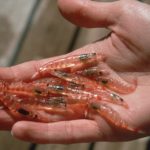Atmospheric ice-nucleating particles in the dusty tropical Atlantic
1 March, 2018 by Gillian Young
Desert dust is one of the most important atmospheric ice‐nucleating aerosol species around the globe. However, there have been very few measurements of ice‐nucleating particle (INP) concentrations in dusty air…Read more on Atmospheric ice-nucleating particles in the dusty tropical Atlantic
